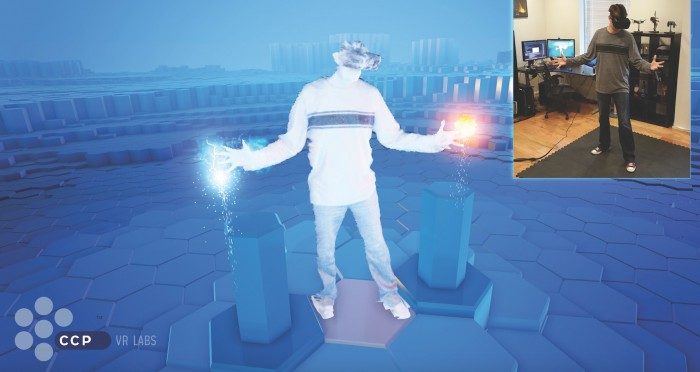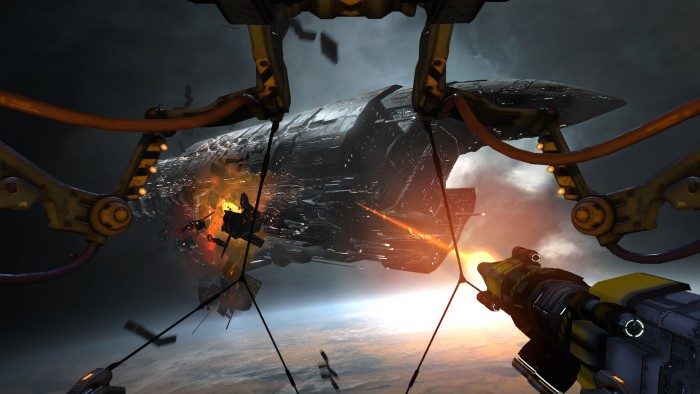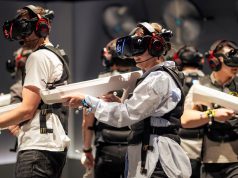Adam Kraver, Architect at CCP’s recently unveiled VR Labs, speaks to Ben Lang at Fanfest 2015 about how his team is experimenting with virtual reality to “bring people into the VR space”.
CCP‘s VR Labs is only around a year old, formed in the wake of the success and positive reactions generated by the company’s most public of VR experiments, EVE: Valkyrie. It comprises two studios, one in Shanghai and the other Atlanta, the latter made up of just 7 people at this point.
“Generally VR is very much – you put it on and your isolated and you’re blind to the world. You may have an avatar … but it’s never really you.” Kraver says. One of the team’s focuses has been to utilise existing depth sensing technology to bring a player’s physicality into the virtual space. “We’ve done a lot of work with Microsoft’s Kinect 2 to being the depth information from that camera into your [VR] space to allow you to look down, see your clothing, look over and see someone standing next to you.”

VR Labs’ is using Kinect’s ability to sense objects within a space and bring selective information into VR. Depth information provides position and basic geometry to visually describe the player’s avatar in VR. However, due to limitations in the Kinect 2’s RGB camera however, photographic avatars aren’t yet possible, meaning your avatar has a ghostly, holographic appearance.
Kraver continues “Once we’ve got the person in here, how do we – in most cases without a controller – give you an intuitive and effective way to interact with the space.” That focus on input and the Kinect 2 has proved a challenging hit and miss affair. Kinect’s capture data is verbose and interpreting human motions and gestures from a point cloud isn’t easy.

EVE: Valkyrie is an Oculus Rift PC exclusive title, appearing too for Sony’s Playstation 4 VR Headset (now scheduled for release in 2016) – but that doesn’t mean the VR Lab’s team aren’t excited about what Valve had to show at GDC 2015. As you’d imagine, Kraver was impressed by what he’s seen in Lighthouse, Valve’s laser based, room scale tracking solution. “We’ve seen systems like Lighthouse which are absolutely spectacular as far as everything I’ve read, I haven’t got to experience it yet” but Kraver is looking beyond the current state of the art, “…the potential of that to track things beyond the wands … maybe put a little sensor on the chest and now you can have an articulated model, that’s a whole other step.”
It’s encouraging to hear that CCP’s VR Labs are focusing on the human elements of virtual reality. Although the industry is currently pre-occupied with the technical heavy lifting surrounding headsets and controllers (for good reason), it’s not difficult to imagine the second phase of VR requiring more naturalistic representation of a players physicality. CCP should be applauded for playing the long game on this one, and we look forward to seeing what the team comes up with in the future.
Disclosure: CCP Games is covering travel and lodging expenses for one Road to VR writer to attend Fanfest 2015.









